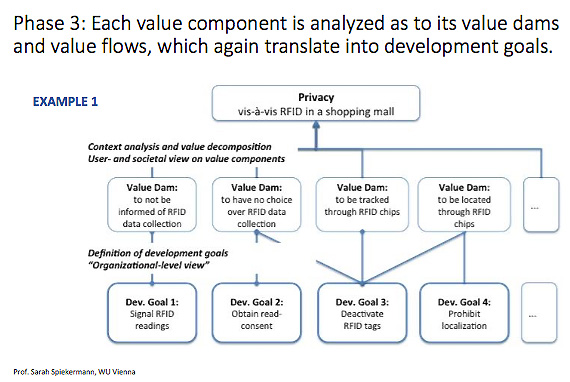In April of 2016, The IEEE Global Initiative for Ethical Considerations in Artificial Intelligence and Autonomous Systems (AI/AS) was launched with a mandate to provide a document that could provide technologists with a pragmatic guide to deal with the pressing ethical considerations of AI/AS. Although it is not a professional code of ethics, the IEEE Global Initiative has created the first version of this document called, EthicallyAligned Design, featuring over eighty specific Issues and Recommendations written by more than 100 global thought leaders in AI/AS, ethics, policy, academia and business. The purpose of the IEEE Global Initiative is to ensure that every technologist is educated, trained, and empowered to prioritize ethical considerations in the design and development of autonomous and intelligent systems. Ethically Aligned Design was created as a complement to traditional codes of ethics, to aid and empower engineers not familiar with these technologies to increase innovation while diminishing negative consequences in their work.
As a pragmatic way of complementing Ethically Aligned Design, the IEEE Global Initiative believes that prioritizing applied ethical considerations at the front end of any system or product development process will redefine innovation for the algorithmic era to encourage excellence and integrity in all of the technology we design for a positive and healthy human future. This means technologists will have the opportunity to use methodologies that provide more rigorous due diligence regarding the values of stakeholders and end users than they may be using today.
Examples of methodologies along these lines include Value Based Design, Value Sensitive Design and Responsible Research and Innovation (RRI). As the RRI Tools website notes, this means “involving society in science and innovation ‘very upstream’ in the processes of R&I to align its outcomes with the values of society.” The goal of the IEEE Global Initiative is to institutionalize the rigors of this “upstream analysis” to further aid the scientists and engineers involved in the creation of the intelligent, autonomous, and other emerging technologies driving our human future.
To help steer this alignment process, the IEEE Global Initiative recommended ideas for Standards projects* that became the IEEE P7000™ series of Standards Recommendations based on Ethically Aligned Design. The series to date includes the following:
- IEEE P7000™: Model Process for Addressing Ethical Concerns During System Design (Working Group already in process)
- IEEE P7001™: Transparency of Autonomous Systems (Working Group already in process)
- IEEE P7002™: Data Privacy Process (Working Group already in process)
*Only the IEEE Standards Association (IEEE-SA) can actually create Standards–the IEEE Global Initiative makes recommendations for Standards that become Working Groups once approved.
IEEE P7000™
IEEE P7000™ provides a seminal opportunity for technologists to imbue their systems development process with prioritized ethical considerations. Here are specifics regarding IEEE P7000™, a Model Process for Addressing Ethical Concerns During System Design:
Purpose of the project: Innovation teams, including engineers, technologists, and other project stakeholders need a methodology for turning ethical concerns around technology into values for corporate technology strategy. They need to know how to enrich system analysis and design with the identification, analysis and reconciliation of ethical impact dimensions.
The purpose of this Standard is to enable the pragmatic application of this type of Value-Based System Design. The methodology developed in this effort demonstrates how a conceptual analysis of values and an extensive feasibility analysis can help to refine ethical system requirements in systems and software life cycles. P7000 will provide engineers and technologists with an implementable process aligning innovation management processes, IS system design approaches and software engineering methods to minimize ethical risk for organizations, stakeholders, and end users.
Need for the project: Engineers and their managers, as well as other stakeholders, benefit from a well-defined process for considering ethical issues early in the system life cycle. Consumers are not trained to think of the ethical considerations regarding the products and services they use–it is only by rigorously examining ethical concerns that manufacturers, engineers, and technologists can best ensure products and services are as safe and relevant for end users as possible. It should be noted up to this point there is no IEEE Standard offering a process model for engineers to consider ethical factors affecting their projects.
To provide an example of how this type of ethically-oriented work can function, the diagram in Fig. 1 was created by Professor D. Sarah Spiekermann, who chairs the Institute for Management Information Systems at Vienna University of Economics and Business (WU Vienna). She is also Vice-Chair of the IEEE P7000™ Working Group, and author of the book “Ethical IT Innovation: A Value-based System Design Approach,” which features a vast repository of research demonstrating the business value of prioritizing ethics at the front end of design.

Fig. 1. From Ethical IT Innovation by Sarah Spiekemann (by permission).
Although it may seem difficult to create an ethical focus for the system development lifecycle of an organization, it is possible to thoroughly evaluate values like privacy (as shown in Fig. 1). By considering how an end user or stakeholder identifies with a certain value, and by recognizing where “value dams” would keep them from achieving values important to their lives, engineers can proactively and preemptively build AI/AS tools that align with people’s ethical and deeply held beliefs.
In this way, the hope of our P7000™ Working Group (“our,” as I am the Working Group Chair) is that it will redefine innovation by helping companies focus on values throughout the entire system development life cycle to create more value for customers while avoiding breaches regarding their beliefs and unintended consequences that can be costly from a risk, compliance, or a negative public relations standpoint.
Challenges
There are important challenges our Working Group faces while creating P7000™ that reflect the pressing need to create a methodology that prioritizes ethical considerations for the systems development life cycle.
Firstly is the notion of awareness. While professional codes of ethics are firmly established for organizations like IEEE and others that provide robust measures for employee or member values, many technologists are unaware that applied ethical methodologies like values-based design exist. Currently, the word “ethics” can sometimes be frustrating for many engineers as it implies a focus on risk, compliance, or whistle blowing rather than a new way of framing innovation in the algorithmic age.
For this reason, in the IEEE Global Initiative we often say, “ethics is the new green,” to reposition our work in a light of business sustainability in a similar fashion as how the green/environmental movement came into the enterprise a decade ago. In this analogy, it is the people (employees and end users of products) we are hoping to sustain by better aligning products and systems to their values in the same way organizations have aligned their core values around sustaining the planet in ways that help define their brand to the marketplace.
A second challenge to tackle is the need for clarity around definitions. Understandably, when people first begin thinking about ethical considerations in the workplace, they focus on specific methodologies like utilitarianism or virtue ethics and assume P7000™ will favor one mode of thought over another. However, this is not the case. Rather, it is by mapping overarching values as shown in Sarah’s diagram in Fig. 1, that multiple philosophies or methodologies can be applied to try and determine stakeholder and end user values. Once these are identified, these same methodologies can then be used to help prioritize how best to address issues relating to people’s values and the “dams” that could keep them from coming to fruition. This process will also be expanded to try and recognize cultural considerations of a product created in one country that is designed for use globally.
Thirdly is the need to provide certification for the P7000™ Standard(s). In the same way an organization can define, implement and validate how they incorporate a system like Agile for Marketing, our goal is to make P7000™ certification along these same lines. Meaning, what an organization can provably demonstrate is their analysis of stakeholder/end user values, and their due diligence to design and build products and services that align to those ethical or preference-based signals. Plus, as products and services created via the P7000™ process begin to be widely used, our hope is to identify qualitative and quantitative metrics demonstrating products and services align to end users based on their direct feedback. This may happen through surveys, societal metrics like the OECD’s Well-being Index, or via sensor-based technology reflecting people’s use of products and services, and their ethically oriented sentiment via social media or other channels demonstrating their belief that their values are being honored.
Conclusion
The good news is that in all of our work to increase awareness, provide definitions, and create certifications for these ethical considerations, we will be educating technologists on the existence of value-driven design in ways they may not have considered before. Just as important in our algorithmic era, we are hoping to encourage organizations to prioritize human wellbeing by the proactive prioritization of values elicitation and implementation.
It’s early days for the Working Group, and we welcome anyone’s participation.
John C. Havens is Executive Director of The IEEE Global Initiative for Ethical Considerations in Artificial Intelligence and Autonomous Systems, and Working Group Chair for IEEE P7000™. John is also a regular contributor on issues of technology and wellbeing to Mashable, The Guardian, HuffPo and TechCrunch and is author of Heartificial Intelligence: Embracing Our Humanity To Maximize Machines and Hacking Happiness: Why Your Personal Data Counts and How Tracking it Can Change the World.
John was an EVP of a Top Ten PR Firm, a VP of a tech startup, and an independent consultant where he has worked with clients such as Gillette, P&G, HP, Wal-Mart, Ford, Allstate, Monster, Gallo Wines, and Merck. He was also the Founder of The Happathon Project, a non-profit using emerging technology and positive psychology to increase human wellbeing. John has spoken at TEDx, SXSW Interactive (six times), and as a global keynote speaker for clients like Cisco, Gillette, IEEE, and NXP Semiconductors. John was also a professional actor on Broadway, TV, and film for 15 years.
For more information, visit John’s site or follow him @johnchavens.




